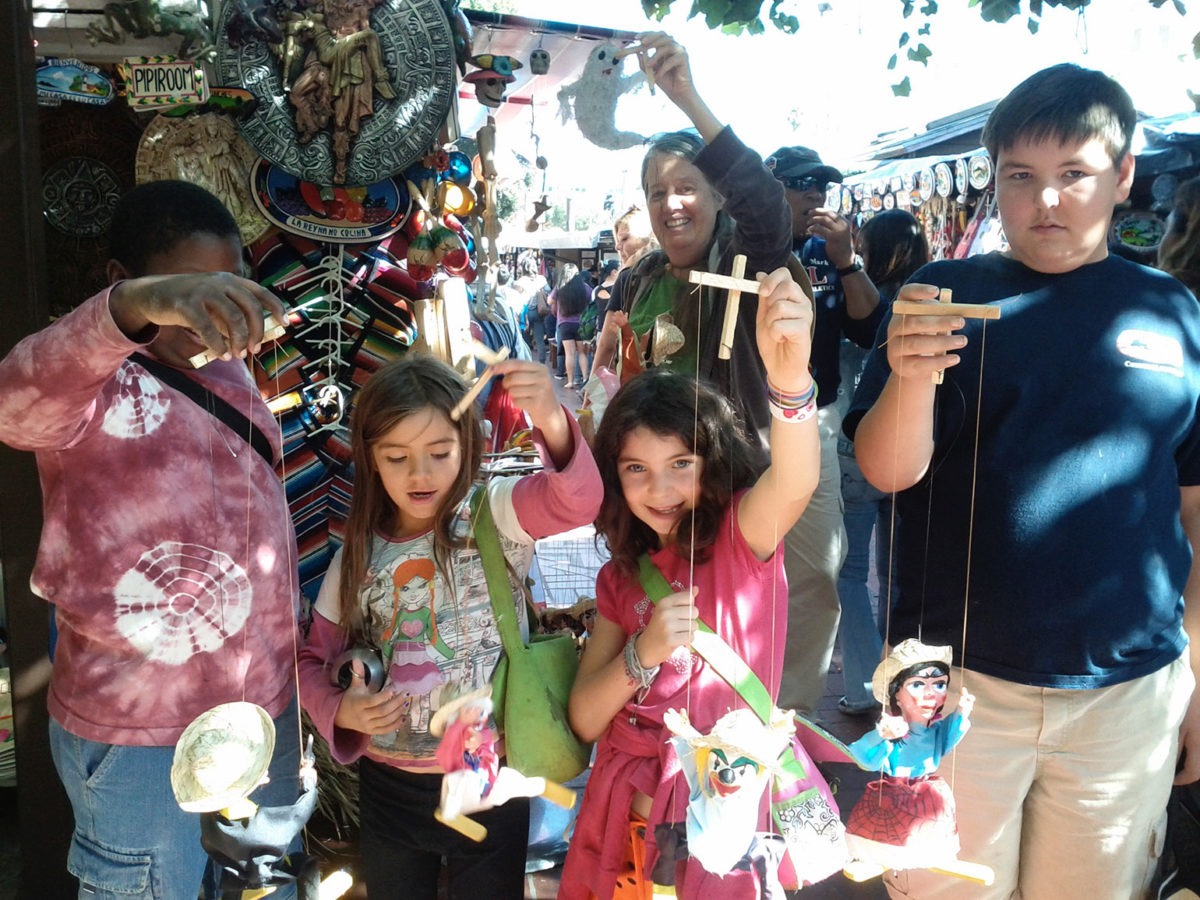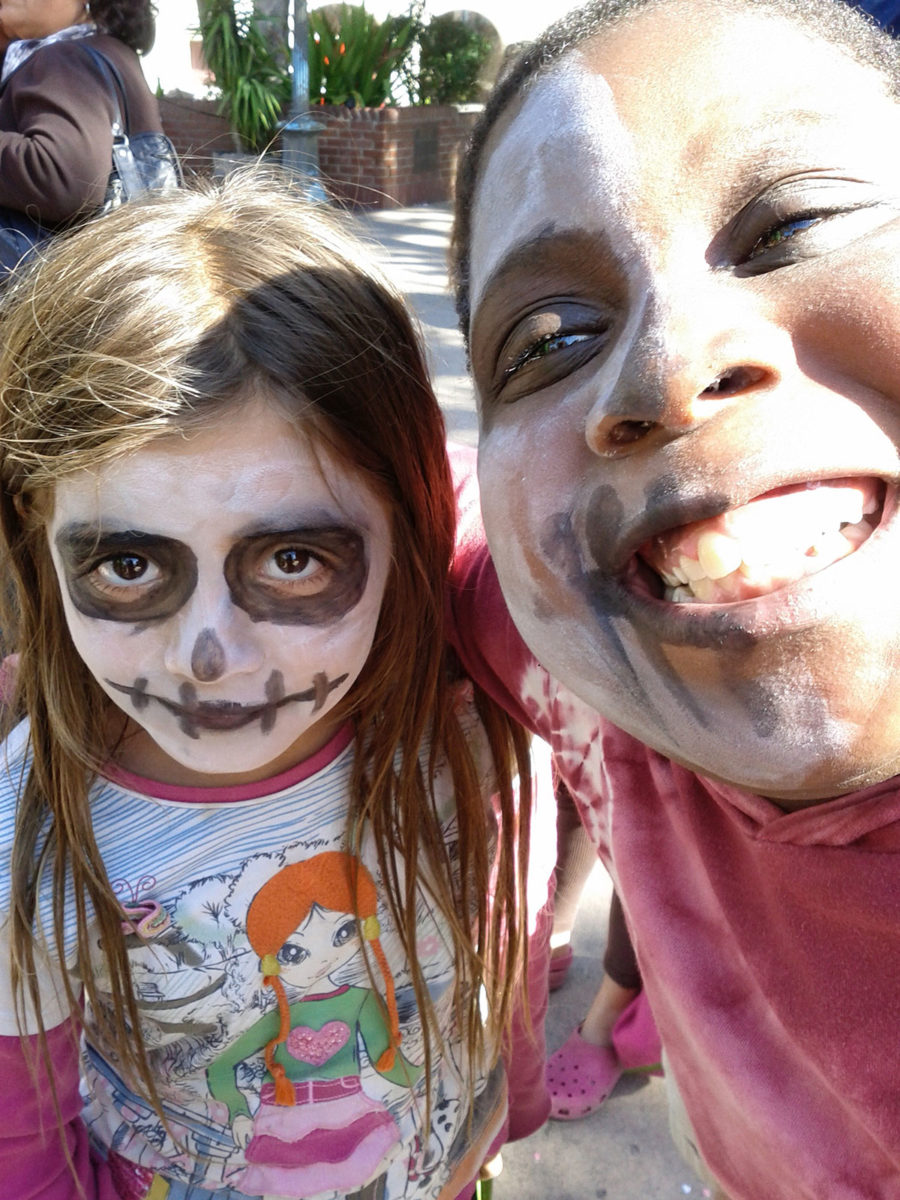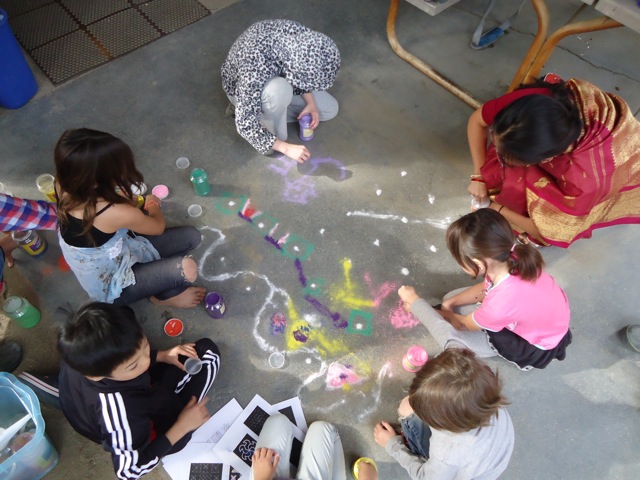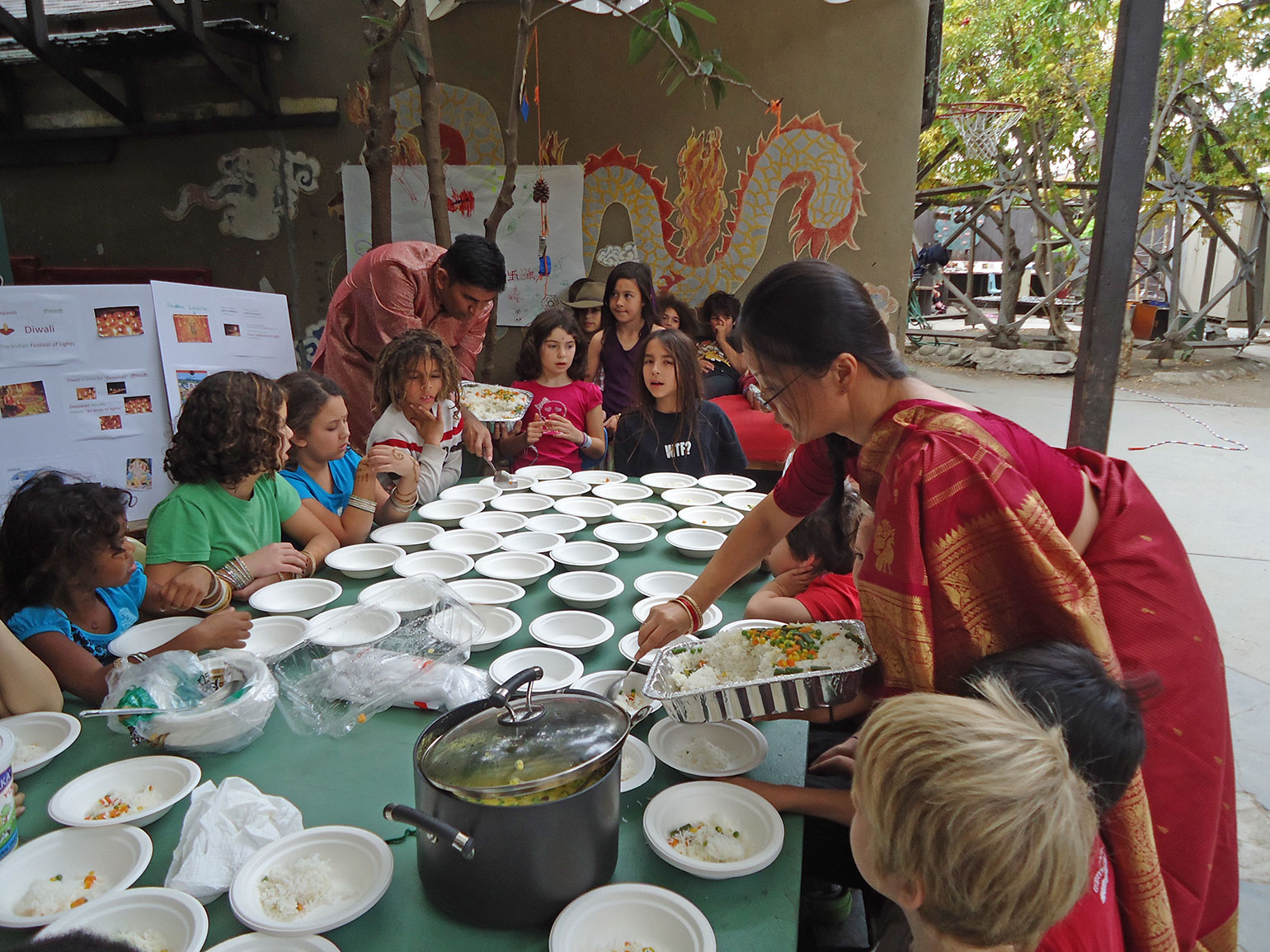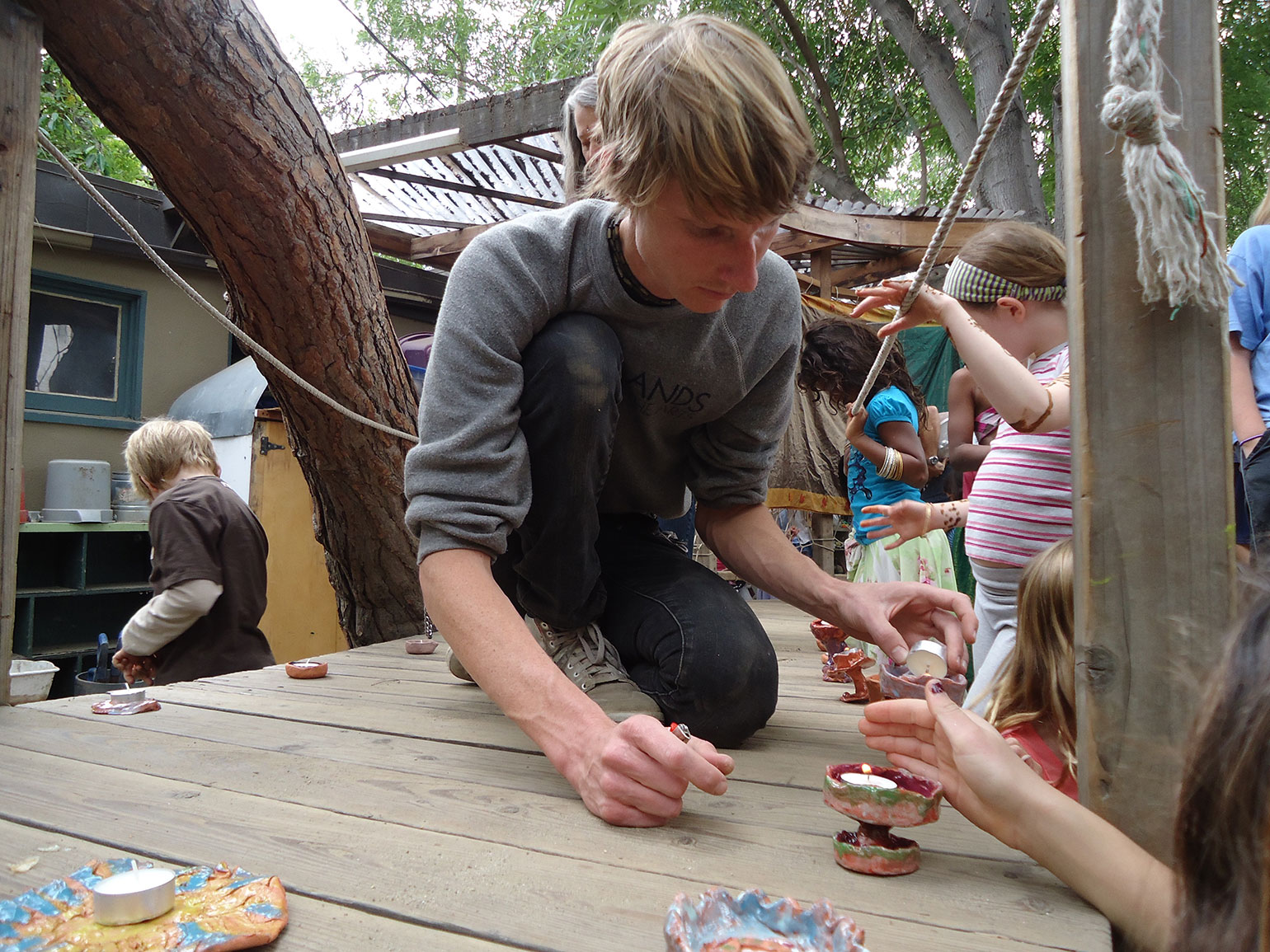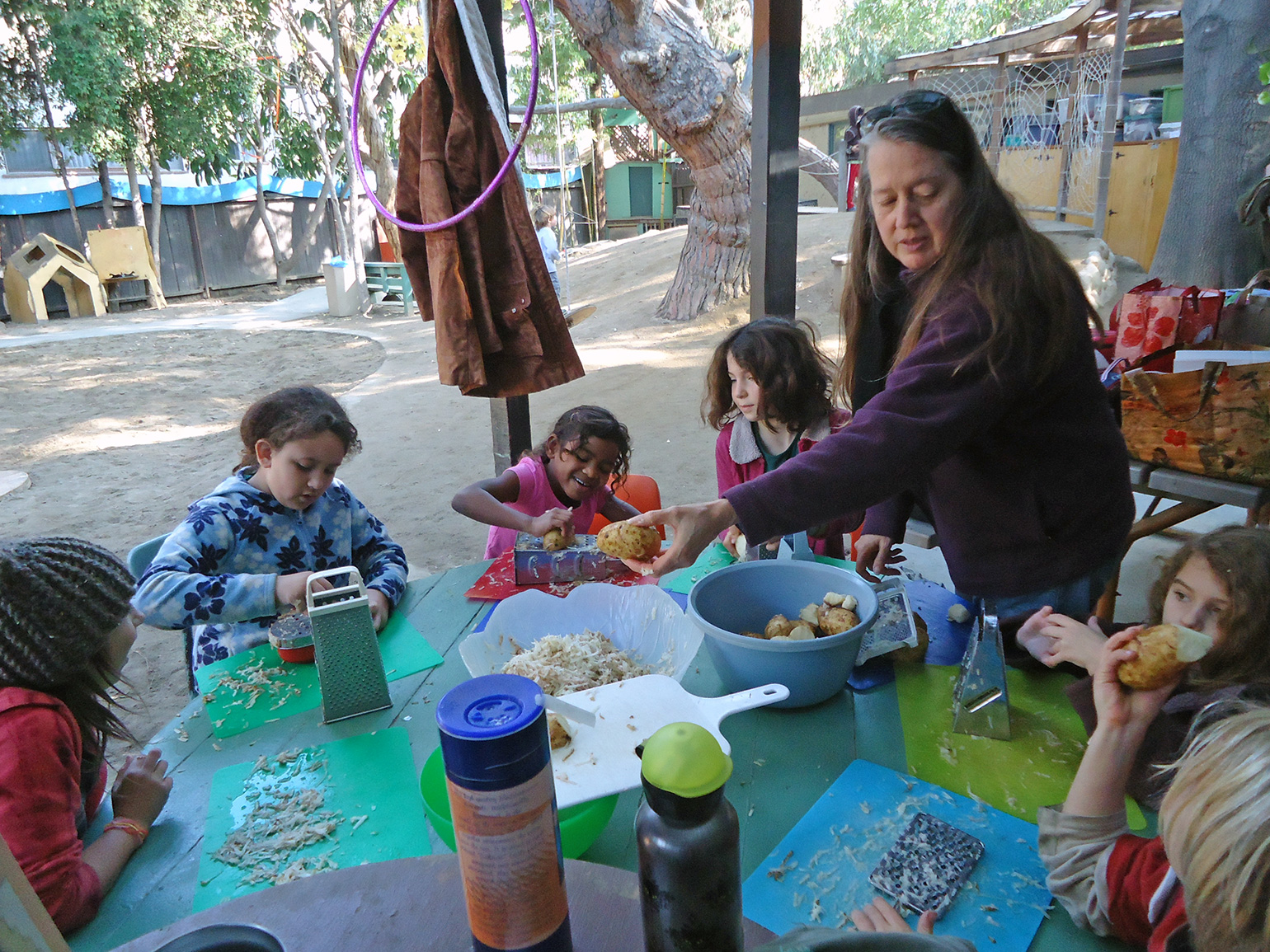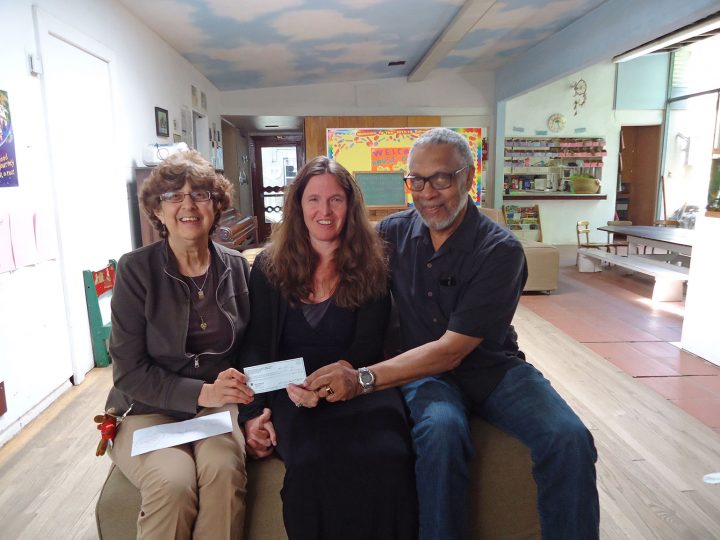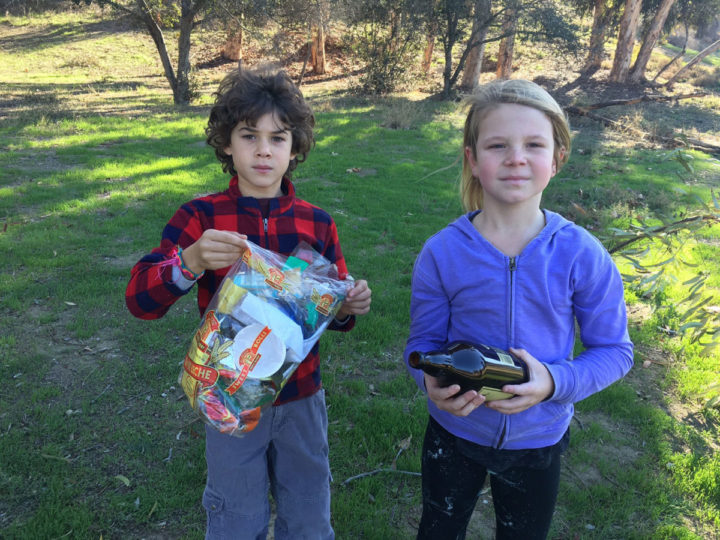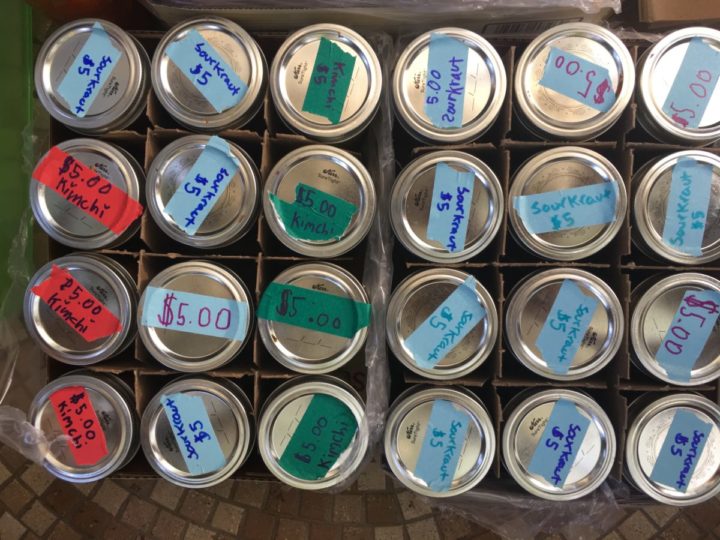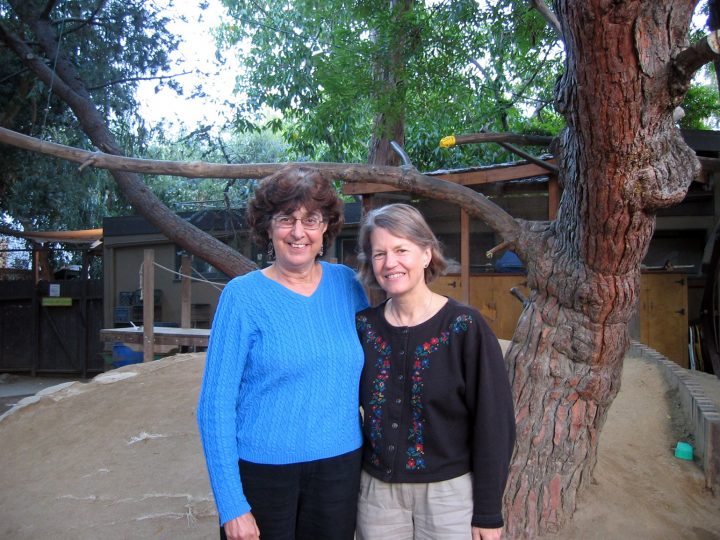by Unity Imani-ImoJah, Mountain Yard Teacher
Our Mountain Yard curriculum encompasses many areas, including anti-bias activities that inculcate an appreciation of ethnic and cultural traditions. For instance, during late October/early November we honored the Mexican tradition of Día de los Muertos (Day of the Dead). Trudi (Teacher, Mountain Yard) helped us create an altar dedicated to our loved ones who have died that was displayed in Mountain House. In addition, Jemina (Teacher, Mountain Yard) and I took four interested students downtown to Olvera Street on November 1 to experience this tradition on a deeper level. We saw several altars created by community members to honor their deceased family members. Some of us had our faces painted with black and white makeup which gave us a rather ghostly appearance. We had the chance to help break a piñata and listen to some beautiful indigenous flute music. We went into a museum that showed different ways of honoring those who have moved on to the other side of the veil, through paintings, music and a dvd showing a dance performance. At the end of the day we returned, face make-up still intact, to join the rest of the yard in eating “pan de muertos”donated by Alonso’s father José, who is the owner/baker of ’Lonzo’s Bakery on Washington Boulevard in Culver City. (Thank you, José, Miriam and Alonso!)
On November 10, we celebrated a holiday from India, known as “Diwali”, in the yard. I checked in to see if Shriram’s parents, Bhaskar and Zhen Krishnamachari, were willing to help me with this plan. They were very willing and excited to celebrate Diwali in Mountain Yard. (In fact, they both took the whole day off to facilitate the plan.) This is an official holiday celebrated not only in India, but Nepal, Sri Lanka, Myanmar, Mauritius, Guyana, Trinidad & Tobago, Suriname, Malaysia, Singapore, and Fiji. The actual date of this holiday varies between mid-October and mid-November. This holiday is celebrated for different reasons, but for the Hindus it is a very important festival. It is commonly known as the “Festival of Lights”. The word Diwali (which is short for the Sanskrit word “Deepavali”) means “row of lamps”. Lighting small clay lamps known as “dipas” or “diyas” filled with oil shows the triumph of Light over Darkness or Good over Evil. Leslie Rosdol, our ceramics specialist & teacher, helped interested students make their own dipas out of clay. Traditionally, these dipas are not glazed. Some children chose to stick with tradition, others chose to glaze their lamps.
On the day of the celebration, we started out with the tradition of decorating the ground outside of doorways by doing this outside various Mountain Yard entryways and even outside the front gate with drawings made from colored sand. While this was going on, some students decorated their arms and hands with henna. (Henna is used this way in India, although not really a Diwali tradition). Zhen, Bhaskar and Shriram brought traditional Indian clothing for us to see and Zhen also brought “bindis” for us to decorate our foreheads with. We placed all of the dipas we had made in two rows on the bridge, each one with a votive candle inside. The candles were then lit. What a beautiful sight to see the rows of lights! We all stopped and admired this beautiful scene. Slowly, people gathered around the table where we were preparing to serve the rice and dal that Zhen had made. Spontaneously everyone started to clap to the Indian music that Bhaskar had playing in the background. It was so joyous and moving! The food was delicious. We topped it off with two treats, one called “rava kesari” (a kind of semolina pudding) that Zhen made and one that Yoko (Teacher, Mountain Yard), along with some Mountain Yard students, made called “gulab jamun”. What a wonderful celebration. (Thank you Bhaskar, Zhen and Shriram for all of your help!)
On December 14, we celebrated one of the food traditions associated with the Jewish holiday, Hanukkah, by making potato latkes. Several students helped me grate ten pounds of potatoes! No one wanted to help cut onions, so Jemina set to work finely chopping six onions. The rest of the plan involved squeezing the moisture out of the potatoes (who knew potatoes were so full of water?), mixing with eggs, salt and pepper and frying in olive oil. For forty-nine children and eight teachers, that’s a lot of frying! At the end of the day we ate latkes with the choice of the traditional toppings of sour cream or applesauce (or both).
Happy Hanukkah, everyone!


